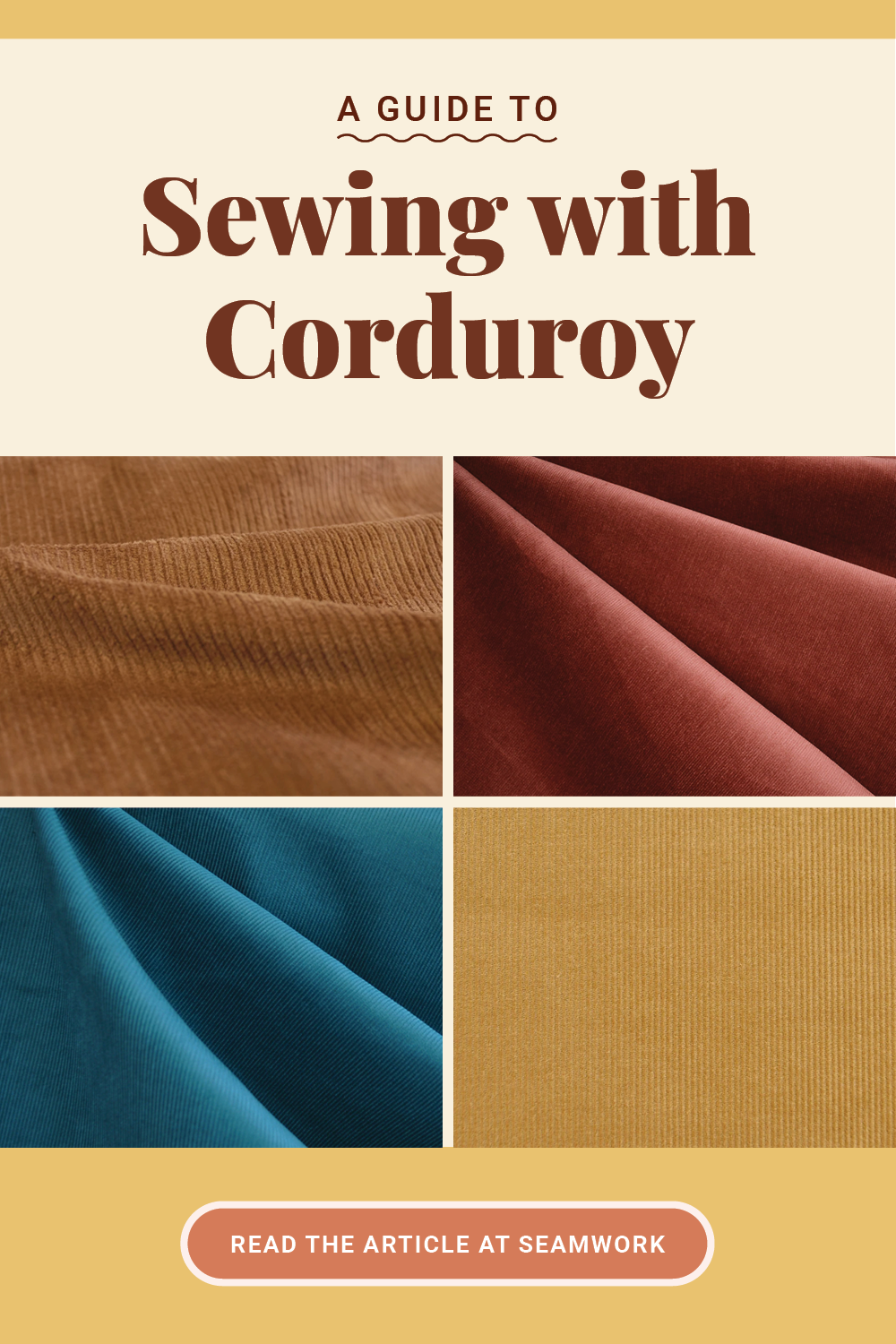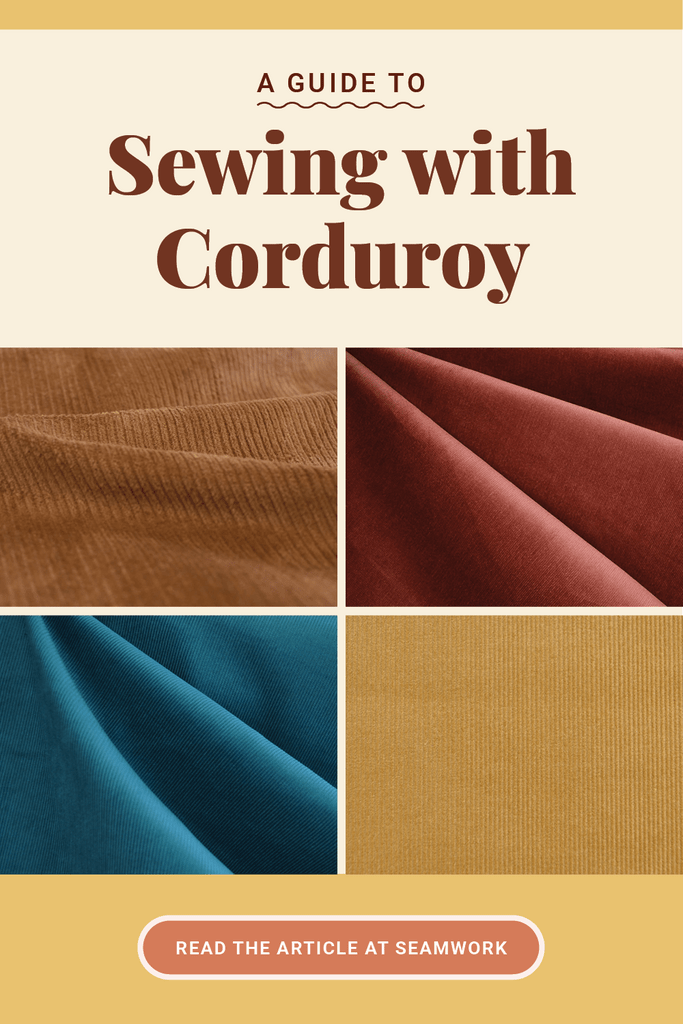I fell in love with corduroy on the same day I fell in love with the hip-length, cranberry-red corduroy jacket that I wore in defiance of all weather conditions in my last year of high school. I liked corduroy before then, but that jacket sealed my fate. So why the obsession? What’s so great about corduroy?
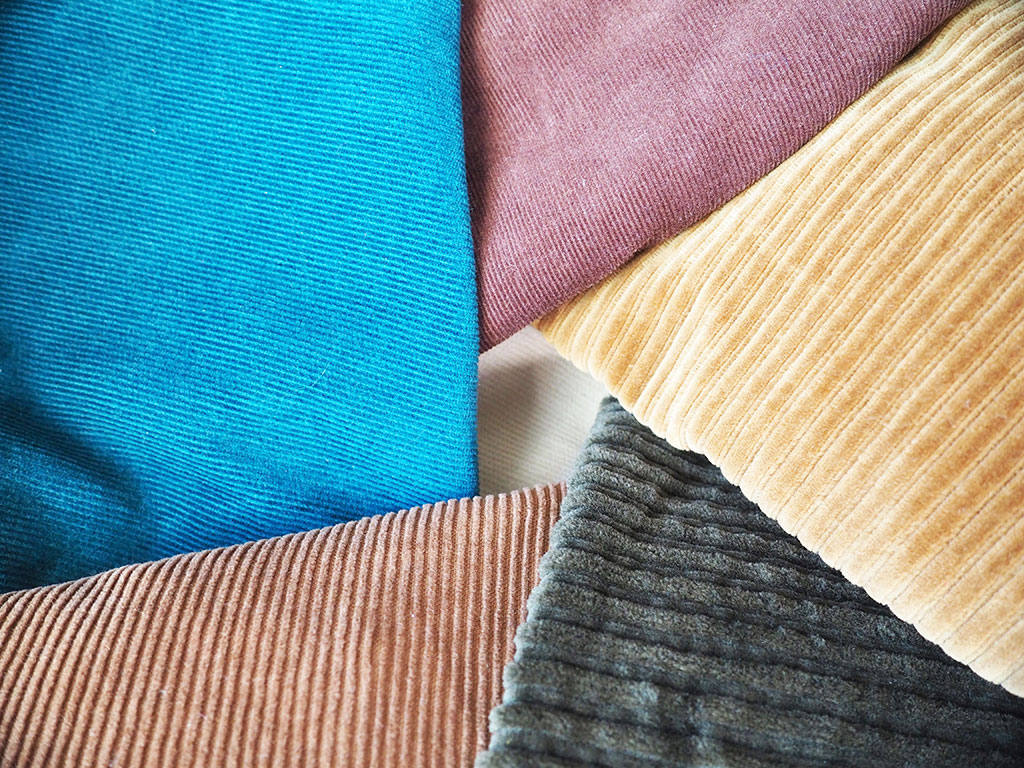
For me it’s the rich textures and colors, the contradictory softness and sturdiness that are irresistible. Corduroy is a remarkably versatile fabric that can equally claim the formal lushness of velvet and the rugged workwear sensibilities of denim. And with a bit of planning and know-how, corduroy can be easy to care for and to sew.
The Anatomy of Corduroy
While the ridges—called “wales”—are what we associate most with corduroy, the fabric is woven with a simple plain weave or twill weave as the base fabric. Next, additional weft yarns are added to the weave with long floats over several warp yarns. These extra floats are then cut to form the pile and singed and brushed to create uniform wales.
The number of wales per inch describes corduroys. You can loosely group them into three categories: Pinwale or needlecord has 16-23 wales per inch, regular or mid-wale has 10-14 wales per inch, and wide-wale has 3-8 wales per inch.
Corduroy is typically made from cotton, sometimes blended with polyester for durability or lycra for stretch.

Choosing Projects for Corduroy
Washing can make a huge difference in the texture and drape of corduroy, so test a swatch and be sure to pre-wash. Even pinwale corduroy can be comparatively stiff, so patterns with structured designs often work best.
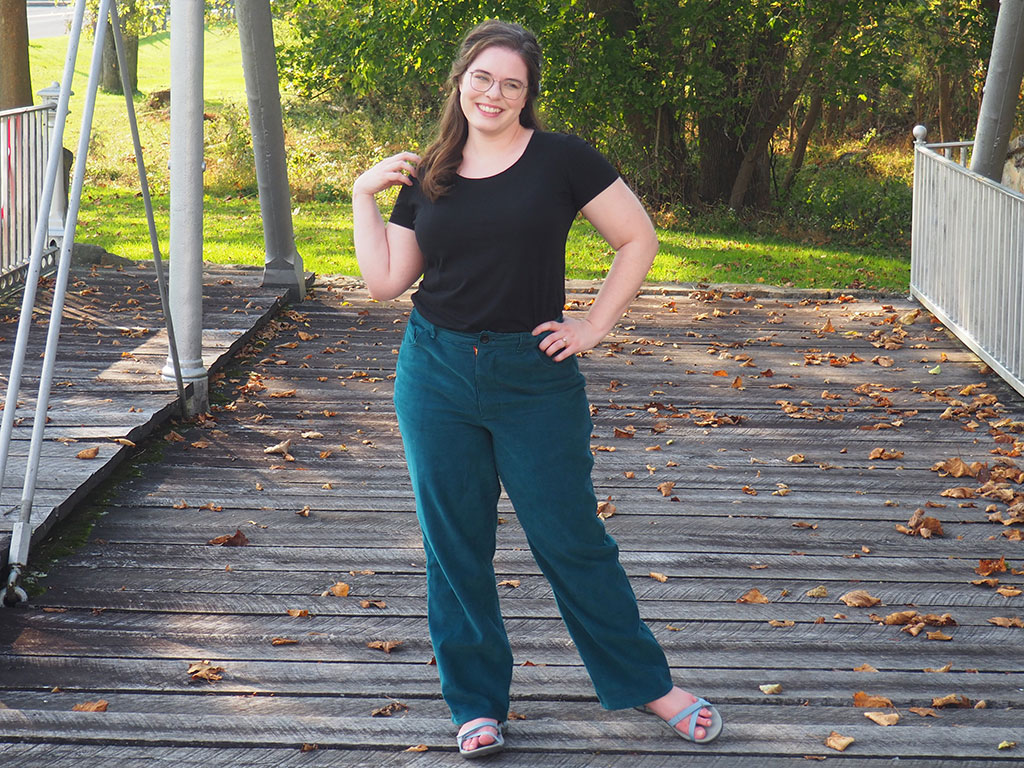
Trousers and jackets are classic choices for corduroy, but cozy shirts, skirts, bags, cushions, and even soft toys (a bear named Corduroy, perhaps?) can be excellent projects for this fabric! Ultimately, the weight and drape of a specific corduroy should guide your choice of project, but in general:
-
Pinwale is especially nice for children’s clothing, shirts, and dresses worn next to the skin. -
Regular works well for most garments but can be too stiff for certain shirts. -
Wide-wale works best for outerwear, trousers, and upholstery applications.
Mixing different weights of corduroy within a project can create exciting textural effects.
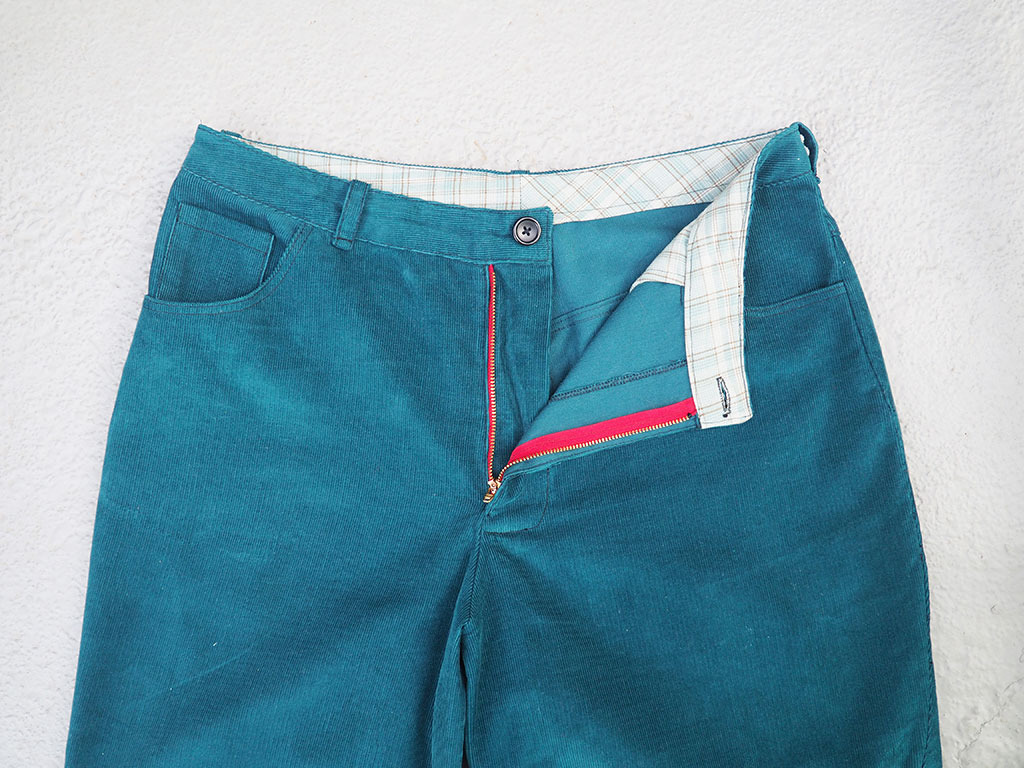
Cutting out Corduroy
Corduroy has two distinctive factors to consider when planning your cutting layout: the direction of the nap and the alignment of the wales.
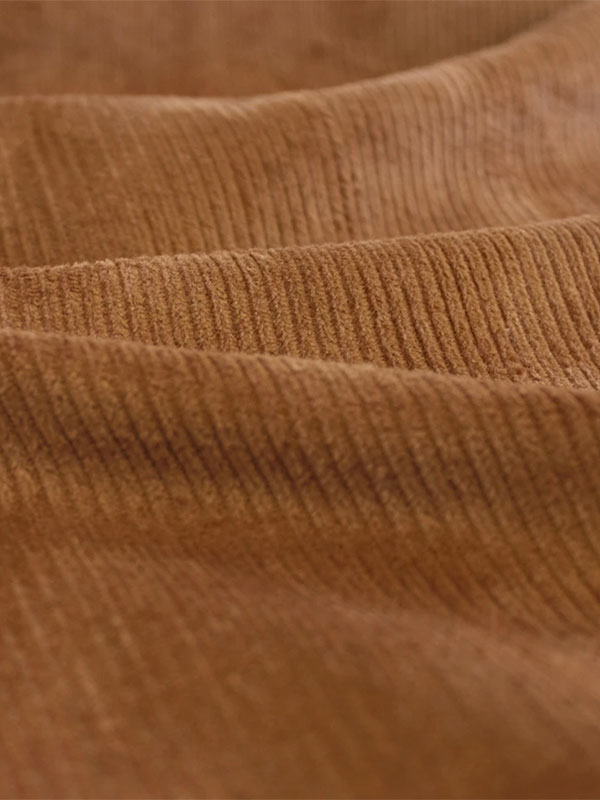
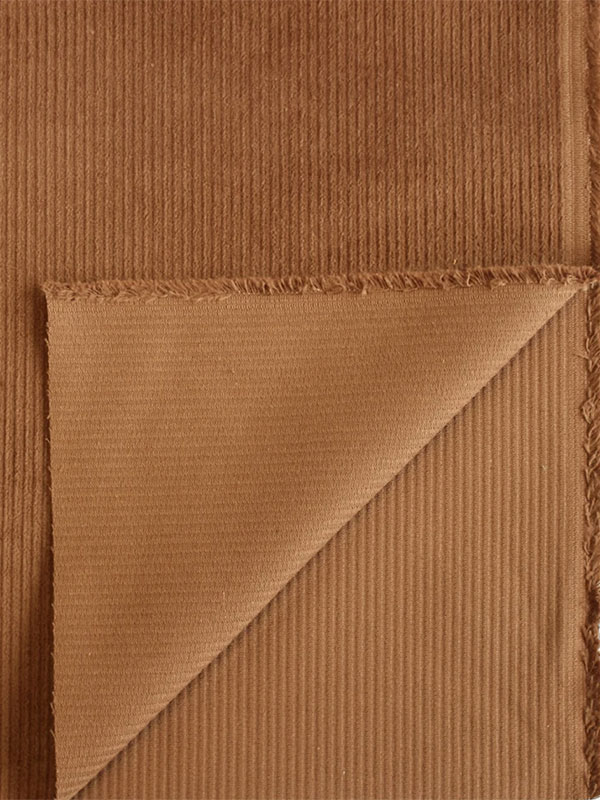
The Nap: Corduroy requires directional cutting layouts because the wales have a nap. You can determine the direction of the nap by running your hand across the fabric, parallel to the selvage edge. The wales will feel smoother when your hand moves in the direction of the nap and will feel rougher when your hand runs against it. You can also tell the direction of the nap by the way the light catches the fabric; corduroy looks lighter with the nap running down the fabric, and it looks darker when the nap is running up the fabric.
When deciding which direction to orient the nap in your project, you should remember that corduroy tends to wear better with the nap running down the garment, but the colors look richer with the nap running up the garment.
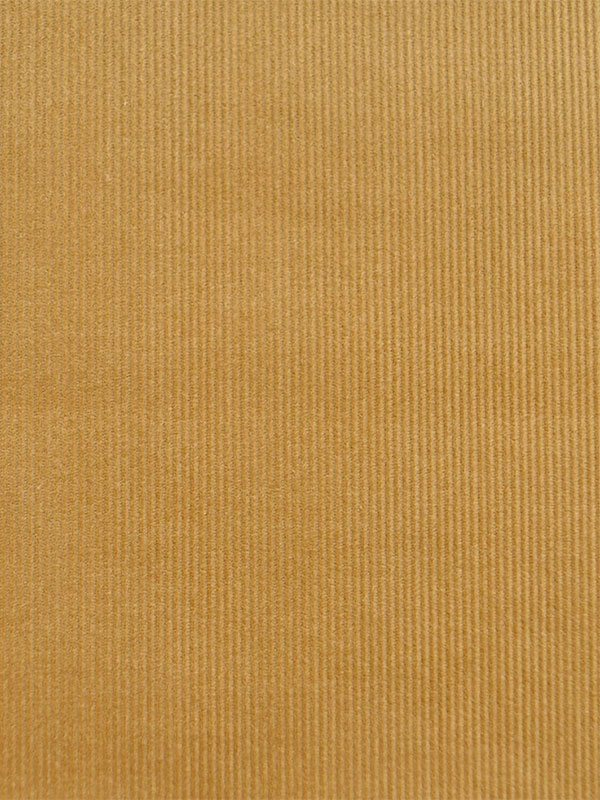
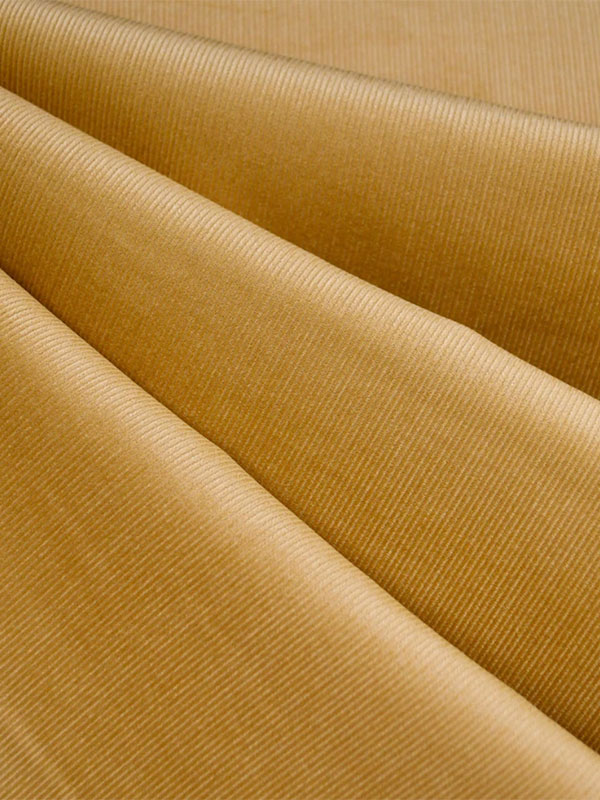
The Wales: These distinctive ridges give corduroy their charming textural stripes, which appear more prominent in wide-wale corduroys. When cutting out your pattern, you should treat corduroy in the same way you would a striped fabric. Consider the direction of the wales and try using the cross-grain and bias to add interesting design elements. There isn’t much need to match the wales for pinwale or regular corduroy, but matching wide-wale or mixed-width wale corduroys can add polish to your garment.
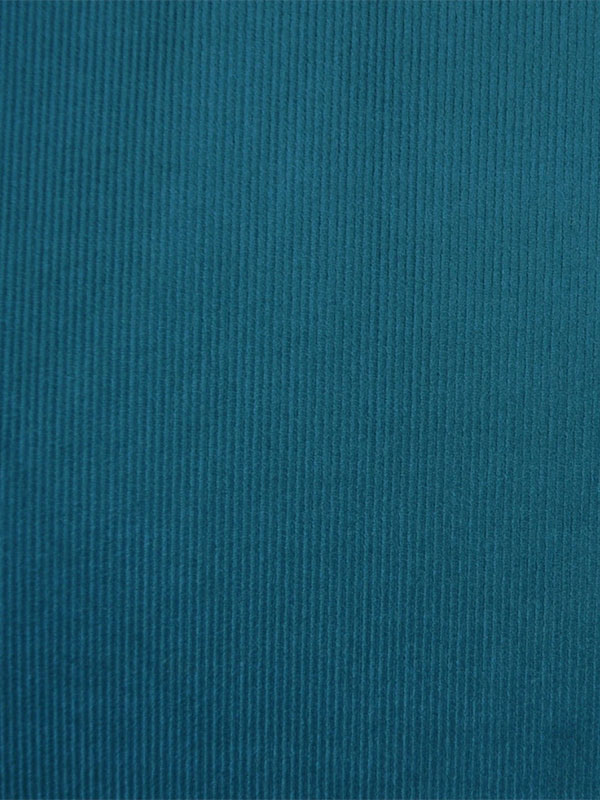

Take Special Care when Pressing
Like other napped fabrics, corduroy requires special care when pressing to avoid destroying the textured surface.
- Avoid pressing during construction whenever possible.
- When you need to press, use plenty of steam and don’t allow the weight of the iron to rest on the fabric.
- Use only the tip of the iron and avoid pressing seam allowances into the fabric as they will leave an impression on the right side.
- Place a fluffy towel over the ironing board and lay the corduroy on the towel with the wales facing down. This keeps the wales from being crushed against the flat surface of the ironing board.
- Once your garment is finished, keep your corduroy looking new by washing it inside out in cold water and reshaping it to air dry. Most wrinkles will hang out, but if an iron is necessary, use lots of steam and avoid crushing the wales.
Since it’s best to avoid pressing corduroy, iron-on interfacings are not ideal for this fabric. Instead, you can use sew-in interfacing or even omit interfacing entirely if your corduroy is particularly stiff. If you prefer using iron-on interfacings, you can also use a different lightweight fabric for facings or linings. This approach has the advantage of reducing bulk at seams and providing a chance to use a fun contrasting fabric.
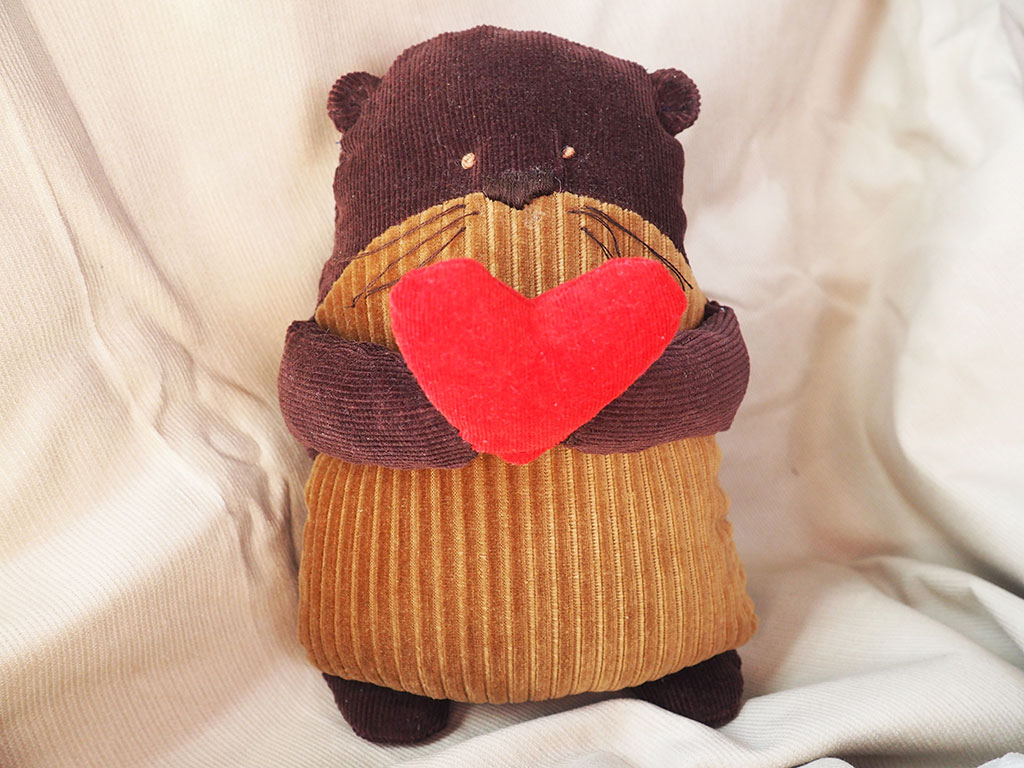
Sewing with Corduroy
Even though corduroys tend to be very stable fabrics, they can still present challenges while sewing due to their tendency to “creep” or shift as you sew. Some corduroys tend to creep more than others, so if you run into this problem, you can try several strategies.
- Always sew seams in the direction of the nap to help reduce creeping.
- Use plenty of pins and raise the presser foot with the needle down every few inches of stitching. This will release tension on the fabric and allow it to settle back into place.
- A walking foot can help reduce creeping because the upper and lower feed dogs keep both layers of fabric moving together.
- Hand basting the seam before machine stitching should resolve most creeping issues if other approaches fail.


- Corduroy can be sewn with regular sewing machine needles, as long as you match the weight of the corduroy to the size of the needle. Size 14 or 16 needles work well.
- Corduroy can be bulky, so choose seam finishes that reduce that bulk. Trim and grade seam allowances whenever possible. You can even try shaving off the wales within the seam allowance for very fluffy corduroys. Zigzag, flat fell, and bound seam finishes work well with corduroy, but avoid French seams.
- Topstitching looks great with corduroy, and the textured surface makes it easy to hide the stitches for hand-sewn invisible hems.
Garments made with corduroy reward the effort that goes into sewing them with years of comfort and style. So when you plan your next sewing project, consider using corduroy for durable basics with an unexpected twist.
Love the article? Pin it for later.
